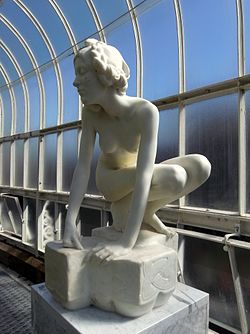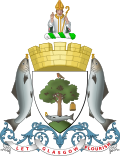 | |
| Location | |
|---|---|
Key people |
|
| Website | The Friends of Glasgow Botanic Gardens |
Glasgow Botanic Gardens is a botanical garden located in the West End of Glasgow, Scotland. It features several glasshouses, the most notable of which is the Kibble Palace.
Contents
The Gardens has a wide variety of temperate and tropical flora, [1] a herb garden, a chronological bed with plants arranged according to their introduction to Scotland, the UK's national collection of tree ferns, [2] and a world rose garden officially opened in 2003 by Princess Tomohito of Mikasa. [3]
The River Kelvin runs along the north side of the Gardens and continues through Kelvingrove Park, the Kelvin walkway providing an uninterrupted walking route between the two green spaces.
The Botanic Gardens was awarded a Green Flag Award in 2011. [1]















